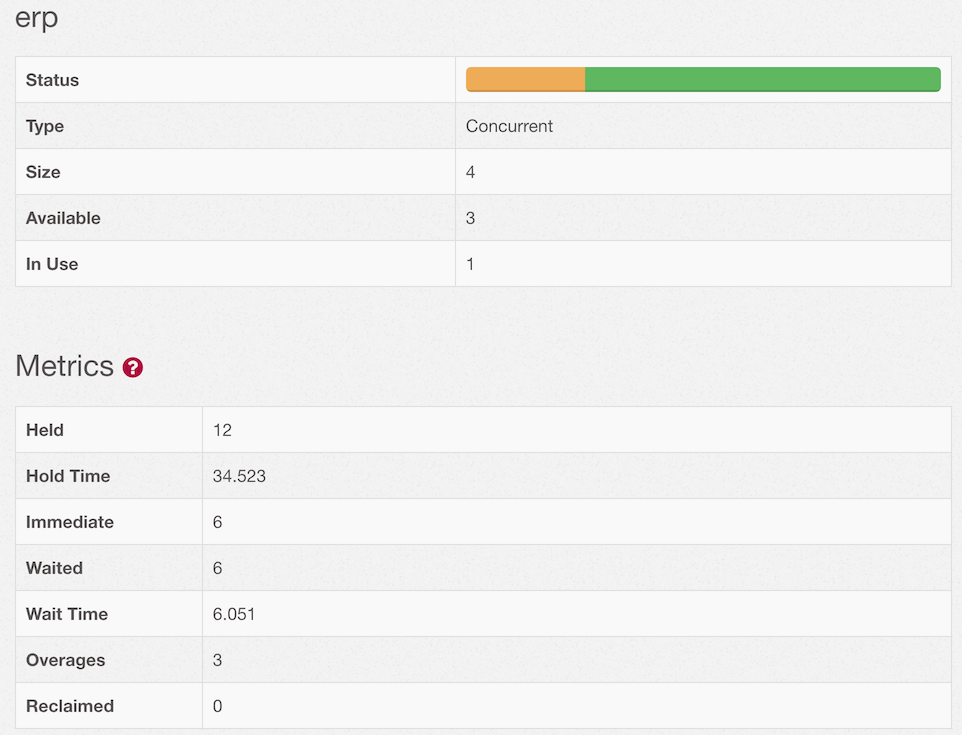Distributed Locking with Redis and Ruby
2016-04-25

It can happen: sometimes you need to severely curtail access to a resource. Maybe you use a 3rd party API where you can only make one call at a time. To handle this extreme case, you need an extreme tool: a distributed lock.
Distributed locks are dangerous: hold the lock for too long and your system throughput plummets. They can easy become a major chokepoint for your app’s performance and scalability.
Recently a blog post talked about using Redis for distributed locking with Sidekiq. I tried the code and it didn’t even work. It did however give me the idea to test Sidekiq Enterprise’s Rate Limiting API, which provides a flexible “concurrent” limiter, against other rubygems which provide a similar lock.
Please Note: I’m not talking about Redlock and other algorithms that provide fault-tolerant locking via distributed consensus. Those algorithms are slower and much harder to get correct; I would never trust myself to write one (or anyone else that’s not a Computer Science Ph.D). In this post, I’m talking about using a single Redis instance to coordinate many worker processes distributed across many machines. This is sufficiently safe and robust for most businesses.
The Setup
I tested four different distributed lock gems, including sidekiq-ent. With any of them we can create a distributed lock which ensures our system executes a block of code exclusively, even with dozens of processes. One thing to understand: sidekiq-ent’s Rate Limiting API does not need to run within a Sidekiq process - it can be used in any Ruby process: puma, unicorn, passenger, sidekiq, etc.
All locking libraries provide similar semantics. You define:
- how long should the code wait for the lock before giving up?
- how long before the lock times out?
The lock has to have a timeout as that’s the only way to recover from a process crash while holding a lock. Libraries “wait” in two different ways: redis-semaphore and sidekiq-ent block, efficiently waiting to be notified when they can take the lock, the other two gems poll regularly, forcing an unfortunate tradeoff: polling more often means slamming Redis with unnecessary work.
The Test
I created a benchmark exercising all four APIs. The code executes 100 “jobs” using 25 threads. Each job sleeps for 0.1 sec while holding the lock, meaning that a perfect run will take 10.0 sec. Gist of the actual benchmark code here.
sidekiq-ent
0.110000 0.100000 0.210000 ( 10.433794)
redis-semaphore
0.150000 0.150000 0.300000 ( 10.487963)
pmckee11-redis-lock
0.460000 0.550000 1.010000 ( 10.718958)
ruby_redis_lock
0.280000 0.250000 0.530000 ( 11.655952)
The third column shows you the number of seconds actually running on the CPU; sidekiq-ent’s limiter used 0.21 seconds of CPU time, the others varied from 0.3 to 1.0 seconds.
The theoretical perfect runtime is 10 sec, 100 jobs * 0.1 sec sleep
so sidekiq-ent adds about 4% overhead. The latter two gems added notably more overhead.
Note in the gist, I had to modify pmckee11-redis-lock to disable exponential
backoff, otherwise it would die with a timeout after several minutes.
Metrics
Unfortunately the other three libraries give you no insight into actual lock usage while sidekiq-ent’s concurrent limiter offers real-time metrics so you can understand how the lock is performing – it can answer questions like:
- how heavily is this lock contended?
- is the lock ever timing out?
- how often is the lock granted immediately vs forcing your code to wait?
You can read the metric definitions in the wiki. Here’s the UI:

What have we learned?
The other libraries give you the basics of a distributed lock but two are lacking in performance and all are missing the metrics necessary to debug problems. Some good things about Sidekiq Enterprise’s concurrent limiter:
- it provides the highest performance distributed lock for Redis
- it blocks, it does not poll or sleep, so it won’t slam Redis with superfluous requests or burn CPU
- it can limit access to N callers, not just 1
- it provides much better visibility with real-time metrics about limiter usage
If you are using Sidekiq today, the Enterprise upgrade will drop right in. You can find it here.